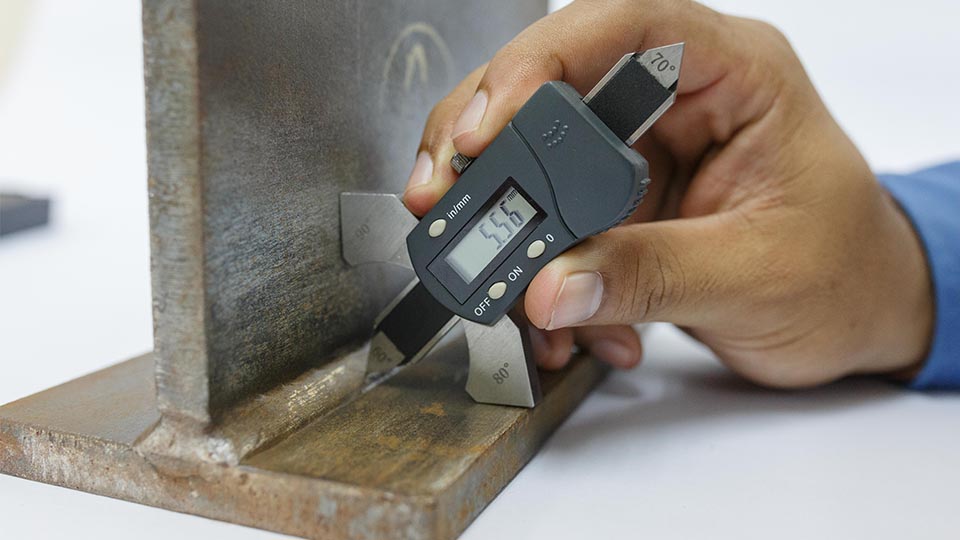Many people have misconceptions about industrial robots, especially with the recent development of artificial intelligence (AI). I have extensive experience as a robot programmer and have spent over a decade learning how to program and train people with this robotic technology, so I know why people have delusions about what industrial robots can and can’t do.
Below, I will explain these misconceptions, why we need industrial robots, and where to go to get labor support for your industrial robot applications.
What are the top 10 industrial robot misconceptions?
Due to misinformation about industrial robots and their place in the workforce, they often get a bad reputation. Successful implementation of industrial robots in the automation manufacturing sector far outweighs the number of failures. Robots solve many problems currently facing manufacturing companies today. I wanted to discuss these robot misconceptions and show how industrial robots can benefit workers and manufacturing companies when properly integrated together.

10 common misconceptions about industrial robots:
1. They Are Difficult To Program
Robots can seem complicated, but industrial robot manufacturers make them easier to program and operate. Robot programmers can program robots easily with a teach pendant or offline program on a computer using the robot manufacturer’s simulation software.
Contract robot programmers can help program industrial robots if a business is unsure how to do this. JOINER Services provides robotic programming assistance through its engineering service platform. Having the right robot programmer on a job allows for quick and easy integration of the robot.
2. Robots Have Reasoning
Often when watching automation, it is easy to forget that someone had to tell the machines what to do. Every scenario had to be planned and thought of before full automation. Every path had to be created and adjusted before any automation could occur.
The reality is that a robot is only as intelligent as its programmed path. Collision zones had to be programmed. Communications with programmable logic controls (PLC) and inputs/outputs had to be accounted for during the installation of the robot cell. [1].
3. Automation Is Expensive
Automation may seem too expensive for certain businesses, but the return on investment can be well worth it. They are incredibly cost-effective and usually pay for themselves within 24-36 months.
The benefits of adding industrial robots to a production line:
- Safer and more comfortable operations can help prevent workplace injuries
- Decrease in cycle time
- Improved quality standards
- Production capacity or throughput improvements
Many businesses choose to automate their business using quality-assured refurbished equipment at a fraction of the cost of a new robotic system. In addition, many companies offer financing for new or used robots.
4. They Take Jobs Away From Humans
This misconception has fueled suspicion and hostility towards industrial robots for many years. One major misconception about industrial robots is that they will replace humans and take their jobs. Automation will only take away some of the manufacturing jobs.
Automation cannot handle every single situation or function that a human performs. For example, robots can’t be creative or compassionate. They can carry on coded conversations with programming software but cannot lead or manage people or effectively teach.
Many jobs require distinct human characteristics. Some jobs might be given to robots, but it is usually for the better. These jobs can be dangerous for people, so robots are allowed to do these jobs. Robots are the perfect solution to any labor-intensive or redundant task.
Instead of hating robots for doing these jobs, think about how they do it so humans can have more fulfilling, safer jobs.
Robots can improve our lives and create more jobs. Many new job opportunities have been created in the robotic industry, from robot programmers to robot technicians and even robotic engineers.
5. They Solve Their Own Problems
Many people think a robot knows how to fix itself if it faults. This is not true. For any fault or crash, a robot programmer or technician will have to troubleshoot any issue.
Industrial robots will reduce problems for humans by removing repetitive or tedious tasks. They also can provide safer work environments that were traditionally human roles because industrial robots can operate efficiently in high-risk or dangerous areas.
A robot will always need someone to tell it what function or task to perform. A robot cannot start without something telling it to “go.” These highly sophisticated machines still need simple command input to resolve issues.
6. Robots Require A Lot Of Maintenance
Generally, robots only require a lot of maintenance if they have not been appropriately taken care of during their automation lifespan. If they are not maintained properly, parts will break down and need to be replaced, or worse, the robotic equipment will fail. Neglecting robot maintenance will lead to decreased efficiency, increased downtime, and potential safety hazards.
Robot maintenance involves regular daily, weekly, monthly, and yearly inspections. These are small preventive measures to keep industrial robots operating at their best. With the proper maintenance plan in place, regular preventive and predictive maintenance actions help minimize downtime, reduce costs, and maximize the return on investment in robotic automation systems.

7. Industrial Robots Only Work In High Volume Settings
Industrial robots have historically been associated with large-scale manufacturing processes like automotive assembly lines. However, this robotic misconception fails to acknowledge the widespread applicability of industrial robots across various industries and business sizes. Now many small and medium-sized companies and non-traditional sectors increasingly use industrial robots.
The availability of new types of robots, such as collaborative robots or cobots, which can work safely alongside humans, expands industrial robots’ capabilities. Cobots are designed to be easily programmable, adaptable, and affordable, making them suitable for smaller businesses with diverse production needs. A collaborative robot is more suited for lower to mid-volume applications. They can assist with assembly, inspection, packaging, and machine tending tasks, enabling companies to enhance productivity, quality, and efficiency.
8. Industrial Robots Lack Flexibility
Traditional industrial robots were perceived as rigid machines capable only of performing repetitive tasks in controlled environments. However, advancements in robotics technology have significantly increased the flexibility and adaptability of industrial robots.
Modern industrial robots have sophisticated sensors, vision systems, and machine-learning capabilities. These features allow robots to perceive and interact with their environment, making them adaptable to variations in tasks and production requirements. Vision systems enable robots to recognize objects, detect patterns, and make decisions based on visual information. Machine learning algorithms allow robots to learn from human operators and optimize their performance over time.
Robots can be equipped with interchangeable end-effectors, such as grippers, suction cups, or specialized tools, allowing them to handle different materials, shapes, and sizes. Using tool changers and quick-release tools further enhances their adaptability, enabling businesses to switch between production tasks or introduce new products rapidly.
These advancements in flexibility and adaptability make industrial robotics more versatile and responsive to the evolving needs of industries. They enable businesses to optimize production processes, quickly adapt to market changes, and customize products to meet specific customer requirements.
9. Robots Are Not Safe
This misconception assumes that industrial robots pose significant safety risks to human workers in the workplace. However, modern industrial robots are designed with safety as a top priority, and extensive measures are taken to ensure safe interaction between robots and humans.
- Safety Standards: Industrial robots are subject to rigorous safety standards and regulations to ensure their safe operation. These standards cover risk assessment, protective measures, emergency stop functionality, and collaborative operation.
- Protective Barriers: Industrial robots are typically installed with protective barriers or safety systems to separate the robot workspace from human workers. These barriers, such as light curtains, laser scanners, or safety fences, prevent access to hazardous areas during robot operation. Safety interlocks are in place to ensure that the robot stops or slows down when a human enters a robot’s restricted area.
- Robot Risk Assessments: Businesses conduct thorough risk assessments before integrating industrial robots into a workspace to identify potential robot hazards and implement appropriate robotic safety measures. This includes evaluating the robot’s speed, force, reach, and potential pinch points. Safety training and guidelines are provided to workers interacting with or working alongside robots to ensure they understand the safety protocols and precautions necessary for a safe working environment.
- Regular Maintenance Inspections: Regular safety monitoring and maintenance are essential to ensure the continued safety of industrial robots. This includes inspections of safety systems, sensors, and emergency stop functionality. Additionally, ongoing risk assessments address any changes in the work environment or production processes that may impact safety.
10. Robots Will Take Over The World
Finally, the last misconception about industrial robots is that they are more intelligent than humans and will take over the world. We can guarantee that robots will not take over the world.
Despite giant leaps recently in artificial intelligence, it is crucial to recognize that the ability of the human brain to connect, find hidden meanings, and adapt to new situations is entirely different from computing data at high speed and creating algorithms.
Humans’ unique advantage over robots is their ability to solve problems creatively rather than simply making predictions based on past data. Robots will struggle to keep up with us because of this.

What are the disadvantages of industrial robots?
Not everything about industrial robots are great. They do have some disadvantages of using them, which include:
- High initial capital cost to purchase the equipment.
- Potential downtime in manufacturing.
- Not capable of making complex decisions (with the help of AI this is getting closer).
- Require higher higher-skilled workforce.
If used properly, they can be a great resource for any company, but if improperly deployed or set up, they can be a costly mistake that takes years to recover from. This is why many companies rely on advanced robotics and automation consulting services to help them support their projects.
The Need For Industrial Robots.
Robots are now beneficial in many industries due to their accessibility and flexibility and can be used in almost all industrial manufacturing plants. The possibilities are endless with the proper programming and end-of-arm tooling. Automating a facility with a robot cell will dramatically improve the production line.
Automatization is not something to be afraid of as industrial robots are often misunderstood and viewed as a threat to workers, but as we have shown, they are all based on myth.
As automation continues to solve problems, industrial robots will be around long term. Humans have much to gain from continued innovation and expansion of their use.
JOINER Services provides industrial robot support!
Find industrial robot support for any phase of your project. With their help, find the temporary labor support you need to make any robot job successful. With a network of hundreds of programmers, finding the right fit for your project is easy.

Join today to find an industrial robot programmer to help support your project.
FREQUENTLY ASKED QUESTIONS:
Below, I list some common FAQs on misconceptions about industrial robotics.
Data Resources:
[1] https://www.polycase.com/techtalk/electronics-tips/what-is-a-programmable-logic-controller.html








